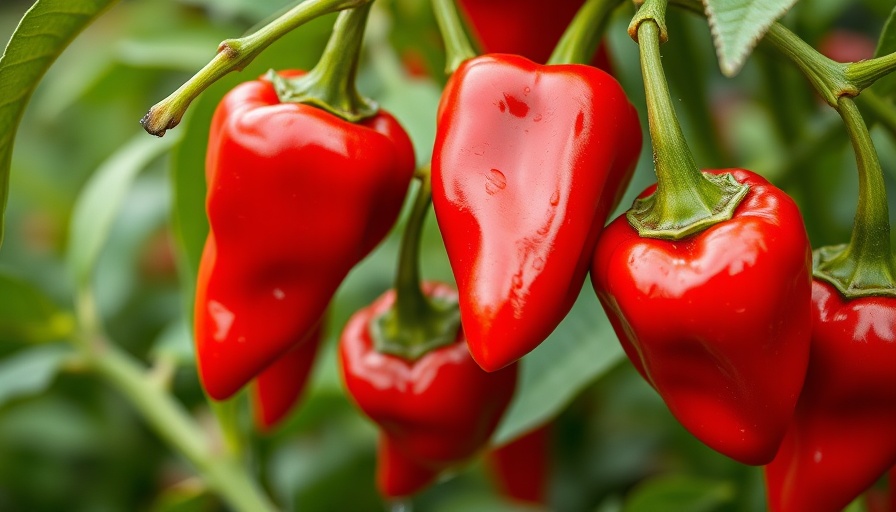
Understanding Habanero Peppers: A Kick of Flavor and Heat
The habanero pepper, a fiery gem, is much more than just another spicy ingredient; it’s a culinary experience traveled through the ages. Hailing from Peru and brought to widespread cultivation in Mexico over 8,000 years ago, this pepper encompasses a unique blend of heat and sweetness that has captivated taste buds around the world. With Scoville Heat Units (SHU) ranging from 100,000 to 445,000, the habanero packs a punch, making it a popular choice in various dishes—from salsas to marinades. Growing your own habaneros not only allows you to control the flavor and heat but also opens doors to treasure varieties you won't find in stores.
Growing Conditions: Ideal Environment for Habaneros
For successful habanero cultivation, the right environment is crucial. These peppers thrive in full sun with warm temperatures and well-drained soil, ideally between pH 6.0 and 6.8. Starting seeds indoors about 8-10 weeks prior to the last frost and gradually acclimatizing them to outdoor conditions can set you on the path to a bountiful harvest.
Seed Selection: Choosing the Right Variety
When selecting seeds, do not overlook the variety! The 'Red Savina' and 'Chocolate Habanero' are among the most sought-after types, known for their exceptional heat and flavor profiles. Each variety presents its unique taste experience, enriching your culinary repertoire.
Best Practices for Cultivation: Care and Maintenance
After transplanting your habanero plants outdoors, a simple care routine can yield positive results. Regular watering, especially deep but infrequent sessions, promotes healthy growth. Apply mulch around your plants to conserve moisture and control weeds. Minimal but consistent fertilization will enhance the yield, particularly if you use organic fertilizers known to boost nutrient availability.
Pest Management: Protecting Your Crop
Keep an eye out for common pests like aphids and spider mites, often controllable with simple solutions like a water blast or insecticidal soap. Additionally, ensure you practice crop rotation and good sanitation to limit disease spread. Implementing these pest control measures will safeguard your pepper plants, ensuring a healthy and vibrant garden.
Harvesting Habanero Peppers: The Right Time to Pick
Patience pays off when it comes to harvesting your peppers. Depending on the variety, habaneros typically take 75-90 days to mature. Once they turn a bright orange or red, they're ready to be harvested. A sharp pair of scissors or pruning shears is ideal for cutting them cleanly from the plant, ensuring you maintain the integrity of both the fruit and the plant itself.
Culinary Uses: From Garden to Table
With a thriving habanero plant, the culinary possibilities are endless. Use your peppers fresh in vibrant salsas, dried and ground in spice blends, or preserved in jars for later enjoyment. The balance of heat and flavor makes them a fantastic addition to various dishes, enlivening your meals with a bit of zest.
Conclusion: The Adventure Awaits
Taking the plunge to grow your own habanero peppers is not just about adding heat to your meals; it’s an invitation to explore your gardening potential and deepen your connection to food. With these tips in hand, you’re now equipped to begin a rewarding journey towards growing your own spicy treasures. So why not try culturing habaneros this season? Your palate will thank you!
 Add Row
Add Row  Add
Add 




Write A Comment